Fetch your sunglasses because we’re looking into the science of sunlight: from the past to the future, what has the sun meant to humanity? Plus, in the news: a global update on COVID, toxic mercury in glaciers, and a new glue that sets underwater.
In this episode

June 2021: Global COVID Update
Maureen Miller, Columbia University
COVID-19, predictably, continues to hog the headlines. In the UK, talk is dominated by whether the delta variant, formerly called the "Indian variant", and a recent uptick in cases, is threatening to derail the roadmap out of lockdown. For now, the Prime Minister is standing by his plans and, buoyed up by impressive vaccination rates with over half the UK adult population now double vaccinated, says he currently "sees nothing in the data" to suggest we should do otherwise. The US is also in an equivalently good place. Elsewhere around the world, though, things are not looking so bullish, especially in countries that, early in the pandemic, appeared to have gotten off relatively lightly. It's also turning increasingly political, with pressure mounting on China as world leaders and intelligence agencies join ranks to ask for more transparency around where COVID came from. Chris Smith asked Columbia University infectious diseases epidemiologist Maureen Miller for her view on the current global situation…
Maureen - Right now developed countries are in an amazing situation. I mean, in New York City today, it was our first non COVID death day since the pandemic began. And I understand that the UK also had no COVID deaths yesterday. We should celebrate that, but we should also be aware that the pandemic right now is at its worst phase ever because it is impacting heavily in Asia, as well as in Latin America. Systems are being overwhelmed, healthcare is not available, and unfortunately there's not enough vaccine or infrastructure to really start heavy duty vaccination in those countries, which is exactly what needs to happen right now.
Chris - Let's unpack that a bit. Then, first of all, the point you made first developed countries are in a brilliant position, less developed countries, less so. Why is that?
Maureen - We recognized and experienced the pandemic early and hard. And we also have kind of monopolized the vaccine availability once it became available. The idea that there would be global sharing has not been realised as much as was hoped. I also think in less developed countries, there was belief that it was under control because so many of these cases are asymptomatic and that's what fuels the spread. People were not testing as much. So they just assumed they had it under control. And with this virus, that is a very, very bad mistake.
Chris - Is that really going to be the cycle then? Do you think going forward, unless we change something radically, we're just going to keep seeing cycles of lockdowns, disease suppression, reopening, disease surging, probably fueled by variants that stem from some corner of Earth.
Maureen - I think until we get a large percentage of the population, the global population vaccinated, that is a likely scenario. Ideally, we would want to disrupt transmission in a big way. That will happen through the vaccination. And it is kind of a race against the virus because most of the vaccines work against most of the variants right now. There will be more breakthroughs. And that's what we're seeing, the variants are breaking through. But because the vaccines are effective at the outcomes they were designed to prevent, which is death and serious disease that causes hospitalization. So we may see people getting more minor disease, but that won't kill them as long as they've been vaccinated.
Chris - To do what is being proposed, which is to keep up on the vaccine front with what the virus is doing, so update the vaccine to make sure that it can prevent against whatever changes are being accrued in the virus. That needs some kind of surveillance system, presumably doesn't it. A bit like the network we have to surveil normally what flu is doing.
Maureen - Exactly. And I worry that we are not putting as much energy into that kind of surveillance as we should. The United States has made a decision not to monitor mild or asymptomatic cases that breakthrough should they be discovered. And I think that's a mistake. I think we need to really understand what is causing infection in previously vaccinated people. And that keeps me up at night.
Chris - Because one of the other points that's often made is that if we had a surveillance system like that, we wouldn't be in the position we're in now because we would have found coronavirus in its present incarnation before it became this big headache.
Maureen - Yes, I think it's a little bit more challenging than that because by the time it was discovered in Wuhan, it had probably been circulating for quite some time and mutating to become transmissible between humans. Really, we need to identify it before it becomes pandemic.
Chris - I guess you're arguing that if we have surveillance that's rooted in hospital that is triggered by a person pitching up in an extreme situation, it's already too late. So we'd need some kind of on the ground network that's spotting these things that are a threat waiting in the wings that hasn't actually realized its pandemic potential yet.
Maureen - Absolutely. Yes. And I have been working on a syndromic surveillance system that can be implemented in communities where spillover animal to human virus spillover is most likely to occur.
Chris - But it's not just as simple as, as people boots on the ground, collecting samples and looking at presentations to healthcare services to spot these things, is it? It needs political buy-in and that's been the other major criticism and a big news story this week as well, isn't it, with cooperation. With the Chinese government actually buying in to cooperate and be transparent because it would appear that they are not terribly good at that. At least for the moment.
Maureen - That's a really big deal because China is a hotspot. It is the hotspot. The area in Southern China in particular is extremely fertile for viruses that can become pandemic. It's not a weakness. It's a reality. The weakness is not communicating and not being a global health citizen to monitor this area to ensure that this never happens again.
Chris - Why is China so resistant to doing this? The WHO went in, they made it difficult for them to get into the country in the first place. There were long delays and they were refused access to certain specimens they asked for. It led to a lot of distrust internationally to the extent you've now got world leaders saying, 'We want independent inquiries'. Why don't China want to join the party?
Maureen - I think they're embarrassed that they have this situation. I think it is to save face. They do not want to acknowledge that their country is a source of pandemic viruses.
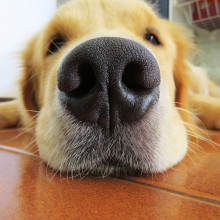
08:25 - COVID odour in socks detectable by dogs
COVID odour in socks detectable by dogs
Claire Guest, Medical Detection Dogs
Help to control COVID-19 might come in future in the unlikely form of “man’s best friend”. Claire Guest is the chief scientific officer at Medical Detection Dogs, where dogs are trained to sniff out human diseases ranging from malaria and C. diff through to bladder cancer. Now Claire and her team have turned their attention, and their noses, to COVID, with remarkable results, as she told Eva Higginbotham...
Claire - Without any question when somebody has COVID-19 and interestingly that's whether or not they're asymptomatic or have symptoms, there is clearly a definite odor that a dog can be trained to recognise. Now, the interesting thing is for this first proof of concept study, we were training dogs to detect the odour on a piece of clothing that had been worn by an individual. So actually it's a sock. So individuals were asked to wear a sock for 12 hours, and then after several weeks, the dogs were asked to see if they could distinguish the odor by sniffing the sock. And they were still able to do it with remarkable accuracy. And this of course is incredibly exciting.
Eva - Puts the idea of smelly socks into a whole new context.
Claire - Doesn't, it indeed. Absolutely. I mean, we sweat a lot through our feet and having worked in other diseases, for example, malaria, we find that we get a very good signal of these particular socks. So that's where we started and we found the same.
Eva - And all the dogs smelling the disease itself, or are they smelling something a human makes in response to having COVID and somehow exudes.
Claire - So it's not the virus itself in terms of, you know, the dog is not trained to find the virus on a contaminated surface. What the dog is doing is finding an individual whose body has responded to the effects of the virus. But as I mentioned previously, the very exciting and interesting thing is that the person doesn't have to be symptomatic. So the effects of the virus on the body is being detected by the dogs, regardless of whether that individual has symptoms or not.
Eva - And how accurate are the dogs that you've trained at identifying a coronavirus sock versus a non coronavirus sock, and also compared to another kind of coronavirus. Because the coronavirus that causes COVID is of course only one, there are many coronaviruses.
Claire - So the dogs were able to detect coronavirus when an individual had just some sniffing, as I say, a sock worn several weeks ago, up to 94% reliability. That's 94% sensitivity. They were also able to reliably identify if somebody hadn't got the virus specificity up to 92%. So we're talking a very, very accurate test here. And if we compare that say with a lateral flow test, which are currently being used, the dogs are much, much more accurate. So the other very interesting finding was that the dog's ability to detect viruses was not affected by viral loads. Now, when you compare it to something like the lateral flow test, this has become very unreliable as the viral load becomes lower. Now, again, this is very, very interesting, and it means that in the future, these dogs could be used to identify viruses and people who are presymptomatic, so in the early stages of viral load and this is, you know, it could be, have a huge impact.
Eva - And do you know what it is that it's actually smelling, what chemical or molecule in the sweat means you have coronavirus.
Claire - We don't know exactly yet what it is. But the team at London School of Hygiene and Tropical Medicine have been doing some analysis on the volatile pattern of coronavirus at the same time. And what we have seen is that the samples identified by the dogs are showing volatile patterns that are quite distinct. This is very exciting and could lead to not only dogs working in the future, but perhaps some sort of electronic analyser.
Eva - Like an artificial nose that could smell diseases.
Claire - Absolutely. I mean, the challenge is that the dog is an incredibly good pattern recogniser. And it's a bit like if I, I'm going to sing incredibly badly now, but if I say dah, dah, dah, you immediately recognise that. And although I'm not an orchestra, you still recognize the tune. Now what the dogs are really incredible at doing is recognising tunes. Now at the moment, electronic sensors need to know the exact notes and the amount of notes to get the detection correct. Whereas the dogs can listen to a pattern and say, listen in a sort of listen to what their nose is saying, that that is the same pattern. That's why they're so good at this type of work at the moment.
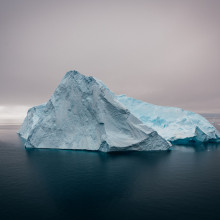
12:59 - Mercury found in glaciers
Mercury found in glaciers
Jon Hawkings, Florida State University
Climate change is rarely out of the headlines at the moment, and one very visible manifestation of warmer temperatures is the accelerating retreat of glaciers, which currently cover about 10 per cent of the planet. But it turns out there’s a double sting in the tail here, because scientists have discovered that, as glaciers scour their way down a valley, they scrape off the underlying rock and release minerals and metals in the process, including toxic mercury. This flows in the meltwater into the sea. And if the glaciers speed up their retreat, the delivery of that mercury into the food chain accelerates too, as Charlotte Birkmanis heard about this work, published in Nature Geoscience, from Florida State University’s Jon Hawkings...
Jon - There's certainly very high concentrations of mercury as well, which is concerning. Something doesn't really add up here. The concentrations on the surface of the ice, where all the melt-water is coming from are very low, but the concentrations in the rivers that are coming out of the ice or from beneath the ice that we were sampling were very high. So there's a missing mass in there somewhere.
Charlotte - Could you tell us exactly how you did this study? How many sites did you go and take these water quality samples from?
Jon - So we sampled three places in Southwest Greenland and two fjords that those glacial melt-waters run into. Taking water quality samples and taking them back to the lab and analysing them in that lab.
Charlotte - And you found a bit more than you bargained for, I think?
Jon - What we actually found was that some of these meltwaters had very high concentrations of mercury, and we think these concentrations of mercury are quite concerning for the export of this toxic element from ice sheets to the ocean.
Charlotte - So how do you think the mercury got there? Did it come from the glaciers and the melt-water, or did it come from somewhere else?
Jon - We think it's very likely that this mercury is coming from the bedrock beneath the sheets. Glaciers are these natural bulldozers. They move very slowly, but as they move over the bedrock, they crush it and grind it up. And they're really efficient agents of erosion. So if you put a glacier over a landscape, you can increase the amount of physical erosion in that landscape considerably. And there's also a lot of water at the base of glacier's ice/rock interface. And it's delivered there by the surface, by pipes through the ice, and crevasses through the ice from the surface to the bed of the glacier. And it also just sits there as kind of like a storage aquifer. It can sit there for quite a long time, some of the water, without freezing. And so there's interaction between the liquid water coming in from the surface of the ice and the liquid water that's stored beneath the ice, plus all this physical erosion. We think that those two, kind of, releases this mercury into the water, which is then flushed from underneath the glacier into these big glacial melt-water rivers.
Charlotte - And with this flushing, do you think it could go off shore a long way? Could it actually impact the food chain?
Jon - We really don't know if this mercury makes it into the food chain. All we do know at the moment is that there are very high concentrations of mercury in the melt-water and that these high concentrations are maintained to a degree in the coastal waters. We sampled some of the surface waters from fjords nearby, and these fjords are mixing zones between the fresh water coming from the ice sheet and the salt water coming from the ocean. And we found high concentrations in those systems that there are environmentally high concentrations in some of these fjords that are fed by these meltwaters. But as I said, we really don't know if this mercury is getting into the food chain or not. And I think that should be a focus of future research.
Charlotte - You mentioned there are high concentrations. I saw that it was comparable to rivers in industrial China. Can you give us an idea of the levels that we're looking at
Jon - Mercury is usually present in very, very low concentrations in any natural waters. So a typical river has about from 1 to 10 nanograms per litre of mercury in dissolved form. And that's like putting a grain of salt into an Olympic swimming pool sized swimming pool. So very small amounts of mercury, and the mercury we're seeing in Greenland is more like 150 to 300 nanograms per litre. So we're talking one to two orders of magnitude higher in these glacial meltwater rivers than in an average river. That's what you would expect to see in heavily contaminated rivers. So these are very high concentrations. I should also say they are still quite low. They are at, or just above, the recommended drinking limits. But the big concern with mercury is that even though it's very low in water, it can bioaccumulate in food webs. And what we mean by that is, as it goes up the trophic levels in a food web, the mercury actually accumulates in the organism and through that process, it can accumulate up to a million times. That's the main concern really
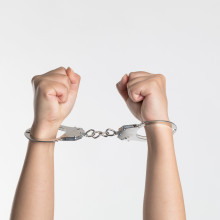
19:10 - Crime rates drop after lockdown
Crime rates drop after lockdown
Manuel Eisner, University of Cambridge
The pandemic has affected all of our lives in innumerable ways. It feels sometimes like nothing’s escaped its grasp, and turns out, crime definitely hasn’t. New research In Nature Human Behaviour has pointed to dropping rates of crime around the world, from Barcelona to Brisbane as lockdowns were put into effect. Manuel Eisner from the University of Cambridge spoke to Adam Murphy about the work...
Manuel - We have been looking at police recorded crimes, and we've basically been looking at common crimes, such as robbery, burglary, and theft. Overall across these cities we find a decline by about 35%, which is quite a substantial decline. But I think one of the interesting things about our findings is that there was a lot of difference between different types of crime. The strongest decline was for robbery and theft, which dropped by about 50%. On average, there was less of a decline for assault and there was no decline actually for homicide. And then there was also a lot of variation between different cities. We included 28 cities and in some cities, the decline was by about 90%. In other cities, almost nothing happened.
Adam - And why did this happen? How did this effect come about with lockdown?
Manuel - We believe that a number of factors were in play. Overall, first of all, we used a measure of the severity of the lockdown, to what extent were people required to stay at home. And to what extent was the stay at home policy enforced, not just by the police, but in some places also by the military. And overall, we find that the more rigorous the lockdown was, the greater was the decline in crime. Now several factors played a role and one of them, of course, was that it becomes more difficult to report a crime, even if it happened, we believe that plays a role, but don't think this is the entire story. The second factor is that common crime feeds on opportunities. As long as you have shops open, you have lots of streets, people in the streets, you have lots of people in public transport, you have lots of vehicles on the streets. Then there are lots of opportunities to commit crime, and these opportunities decline a lot. And thirdly, we believe that for some types of crime, social control increased, we observed, for example, the decline in burglaries. And that's probably because just more people stayed at home and were thus capable guardians who could protect their properties.
Adam - What about those kinds of crimes for people who are stuck at home? Things like domestic violence and homicide from someone you know, what kind of rights did you see there?
Manuel - I think it's really important to bear in mind that the police data that we've been using, and we make this very clear in the report, are not valid indicators of domestic crimes and domestic violence. There is substantial evidence suggesting that at least in some parts of the world, domestic violence increased quite substantially. And that's one of the types of crime that increased as a result of the COVID crisis. There is a second domain of crimes that has increased. And also we have not been able to look at this more closely, and that's everything related to non-contact crime, such as fraud and cyber crimes. They probably both increased. So I think it's important to bear in mind that different types of crime were affected in different ways by the lockdown.
Adam - What happens after lockdown? Do we just go back to a new normal or will it bounce back? Are there things we can keep in mind? Because we're not going to have military enforced lockdowns when all this ends,
Manuel - We very much hope that we won't have another round of lockdowns, although we can never be sure. There is every likelihood that crime will bounce back. It actually already did bounce back during the summer last year, when the measures, lockdown measures, were relaxed in many places across Europe. It will bounce back almost certainly, but there is also a likelihood that it will bounce back above the levels that we have seen before COVID. Over the crisis a lot of tensions and strains have built up; people being unhappy, people being frustrated, strained, and it may well be that in the coming months, we could be in for a bad surprise in terms of crime levels, as they may increase above the levels that we have seen. One example for this is the United States where actually homicide has increased already above the levels before the COVID crisis.
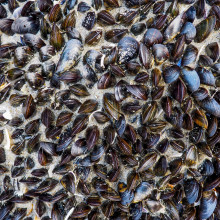
24:36 - Mussels inspire new underwater glue
Mussels inspire new underwater glue
Fiorenzo Omenetto, Tufts University
Now moving on to another sticky subject: glue, which, we’re told by the makers, only works on clean dry surfaces. That’s because getting the chemistry right for glues to work in the presence of water is very difficult. But one solution to finding good glues that will work in the wet is to look at how animals that make glues and live in water have solved the problem. The result, for a team of US scientists, is not just any glue, this stuff’s incredibly strong and even sets underwater. Sally Le Page reports...
Sally - Imagine this. You're on a warm sunny beach looking out to sea with the call of herring gulls piercing through the sound of kids clamouring over the barnacle encrusted rock pools. The waves crash, and you struggle to pull free a handful of silvery-blue mussels that are stuck firmly to the wet rock faces to cook for dinner. And perhaps you think to yourself, I should go back to the lab and invented a glue half as good as this that also works underwater. Or perhaps not, but Tufts university engineer, Fiorenzo Omenetto did begin to wonder.
Fiorenzo - If we think about adhesion, we look at some of the problems that exist in the real world, like barnacles that stick on the side of boats and are really, really hard to get off. Or muscles that are on rocks and that are very, very tightly bound to the rocks that they stick on in spite of waves and in spite of the people that go and want to get them to eat.
Sally - Indeed, barnacles and mussels manage to stick themselves tightly to submerged rocks and jetties, and even withstand being battered by waves. Mussels do it by secreting molecules that cross-link strongly with surfaces, anchoring themselves in place. Barnacles, on the other hand, produce a waterproof protein cement that provides a large surface area for maximum stickiness. Human-made synthetic glues also rely on similar forms of chemistry to do the same heavy lifting. They create molecular bonds between surfaces that make them hard to pull apart. But in many cases, water molecules can interfere with those bonds, making it much harder for glues to work underwater.
Fiorenzo - The water gets in the way and changes the way that the bonds occur. So it changes the way ultimately that the materials stick.
Sally - So how did the Tufts team solve the problem? One of Fiorenzo's research interests is silk that comes from silkworms. And when he looked closely at the barnacle cement, he spotted something surprisingly familiar.
Fiorenzo - These proteins assemble in a geometry that is very particular. And this particular geometry is very similar to the way that silk assembles.
Sally - But barnacle proteins are hard to extract, whereas we already know how to mass produce silk. So could you, he wondered, substitute silk proteins for barnacle proteins to produce a glue that still works underwater?
Fiorenzo - So mussels and barnacles have evolved strategies to create these bonds in wet environments. And so the thought was very simple. If we could get the chemical part that is used by the mussels, and we have silk that maybe provides the function that barnacles do, well let's mix the two and see what happens and see if we can get the advantages of both.
Sally - By combining silk proteins and the sticky molecules from mussels, they've created a new hybrid glue that is the strongest non-toxic underwater adhesive ever made. Underwater glues are incredibly useful, from the obvious cases, such as sticking pipes together to the less obvious, like sealing up wounds during surgeries without having to use stitches. And this mussel-silk hybrid doesn't have to use any strong solvents that, apart from sometimes being poisonous, also tend to smell terrible. So where can we get some? Well, don't hold your breath, except maybe if you're underwater, because if you are hoping to see a tube of this stuff in the shops, anytime soon, the bad news is that according to Fiorenzo, it's going to be a while.
Fiorenzo - It's not going to be within the next six months. It might be within the next six years. And anything in between is fair.
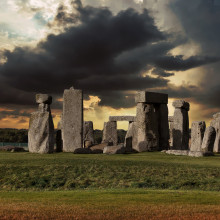
30:49 - Our history with the Sun
Our history with the Sun
Daniel Brown, Nottingham Trent University,
How has the Sun has influenced mankind’s thinking over millennia? From ancient calendar-like Stonehenge to the alignments of temples and pyramids that would have shown our ancestors when key events like the spring equinox were happening, they all speak to the powerful influence of the Sun over human life. And to take us through our relationship with the Sun, Adam Murphy spoke to Nottingham Trent University’s Daniel Brown…
Daniel - Yeah, that's a tricky thing. So for one, Stonehenge is more than what we see or imagine with the stones set up there, with the trilithons and the bluestones in the circle. There's more to it in the wider context; you've got a beautiful avenue. If you then look at the alignments, i.e. in which directions these long structures - like the avenue - point on the horizon, then you can start to link that to the Sun. Because it's really interesting, this beautiful actor in the sky, the Sun, when it rises and sets. Normally if you ask that question, you will get the answer, "Well, the rising is in the east, the setting in the west," which is more or less OK, but only maybe right twice a year because the Sun moves over different parts of the eastern and western horizon, depending on which season that is. So much closer towards the southern parts in the winter and the northern parts towards the summer.
Daniel - So you can nicely link up where the Sun rises to what time in the year that is. And you can see that this long passageway, this avenue, is aligned towards the summer solstice and winter solstice at this specific time. And hence you see many people flocking towards Stonehenge because in the mid summer, you can see then, in the direction of the avenue, the sun rising. But most strikingly I find is the winter. Mid-winter, the 21st of December, is around when you're then going the other way and viewing along the path towards Stonehenge. And you can see the Sun setting there. And that's a beautiful play on the meaning for these sites and a kind of ritual meaning rather than purely you go there to measure what time of year it is.
Adam - And what else was the Sun used for? What other kinds of devices or monuments do we have for that kind of thing?
Daniel - Newgrange is another one, which is a burial site in Ireland where the one passageway is aligned towards one of these rising setting points. But in a way that's the same old, same old in the same area. You can also think about pyramids being aligned. So we've got some beautiful examples; Chichén Itzá in the Yucatan peninsula. So we're now shifting towards over to the Americas, where at the winter solstice, the shadow cast by the Sun creates a beautiful pattern on the stepped pyramid on the steps invoking a kind of shadow play that turns the other side of the stairwell into a snake, which is really beautiful. So again, using sun dates, but not to time something, but to make a monument or something special through shadow play or alignment. And other parts are then taking it towards things like sundials. There's a giant sundial of Augustus that was built at around the birth of Christ. And that was used to determine the date, not necessarily the time, but it's a sundial to determine the date of the year, which was very political to make sure that the then reigning emperor Augustus could show that the calendar he was instating was correct, therefore supporting his divinity. So massively important knowing how the Sun moves throughout the sky and then using it as a power play.
Adam - So then how do you figure out these movements? You can't just stand there for a year. How do you make them last until today?
Daniel - The movements you can see is virtually through observing. You can see where the Sun rises and sets and can see how that plays out over the year. You can see that over shadow plays as well. And we know that from a method that's called the Indian circle method, which we can use to determine where north and south is by putting a shadow casting device in the ground, like a stick, simple as that, and then seeing how the shadow of the stick moves and marking two points where the equidistant, i.e. the shadow is the same distance from the stick at two points. And at that point you can connect that, get the beautiful east west line, and you can align things really nicely. And that stretches way throughout times. And you get that even, believe it or not, into the Victorian times,
Adam - How into the Victorian times, how did that stretch?
Daniel - At that point, you're looking at sundials. Again, you have to move away from the idea of a sundial, being something to read off the actual time of the day. In this case, it's, what's called the meridian sundial. So you mark only one time; the middle of the day. And it's quite interesting that at that time you were establishing the railway network throughout the UK and you needed to install a unified time throughout. And that meant setting clocks all equal. And we were far away from the time signal of the BBC or Telegraph running across there efficiently. So you needed to make sure that your beautiful clocks were set and the Sun was one way to do that. And these meridian sundials cross at mid day give you a beautiful time signal, uh, which you can then tweak to make sure that it matches with GMT Greenwich, mean time. And at that point you can then sit down and that's, uh, an example of beautiful one is still in Bromley house library in Nottingham. There's another one Durham cathedral throughout the UK, where we can see that that's as has happened and it was built.
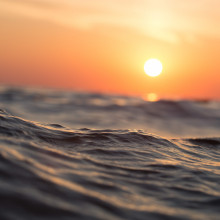
Sunlight and sleep cycles
Linda Geddes
The importance of the Sun didn’t disappear when we stopped using sundials. It’s extremely important to our health, both physical and mental. Chris Smith spoke to science journalist Linda Geddes, author of the book Chasing the Sun about the impact the Sun has on our health...
Linda - Well, sunlight affects us in various ways. There's Vitamin D as you mentioned, but there's also its effects on our circadian rhythms. So in every cell of our bodies, we have these (close to, but not exactly) 24 hour rhythms - in everything from when we release hormones, to the chemistry of our brains, to the activity of our immune cells. And the way those rhythms are kept synchronised with the time of day outside is through the action of light hitting this subset of cells at the back of the eye. But also the timing of those clocks is influenced by when we see the light. Most people will identify as either 'owls' or 'larks': people who like to stay up late, or people who like to get up with the sunrise. Now if you see lots of bright light early in the morning, your circadian rhythms are going to be shifted earlier, so you're going to become more lark-like; but if you're seeing light late at night in the evening and overnight, it's going to push you more towards being an owl. Genetics is also involved, so it's not just about light; but light does have this influence.
Chris - There must be an influence, then, of the invention of the light bulb! Because we haven't had artificial light until relatively recently in human existence, in the last hundred years or so. So has there been a big shift then?
Linda - Well, if you send groups of people camping, you notice that their circadian rhythms shift a little bit earlier, so they become more lark-like. But if you go and... when I was researching, chasing the sun, I went and visited an Amish family in America, and they have a much more traditional relationship with light because they're not connected to the electric grid, and they too are much more lark-like. And if you ask... there are some Amish people who will identify as night owls, but if you ask them, "what time would you ideally get up, and what time would you ideally go to bed?" I spoke to one of these people, she said, "ideally, I'd like to stay up until maybe about 10:00 PM? I know it's really, really late, but that would be my choosing." And she'd like to sleep in until 7:00 AM!
Chris - But why is it a problem, then, fighting your clock, becoming more lark-like, or becoming more owl-like? Why is that a problem?
Linda - It's not a problem if you can choose when you get up and go to work. So if you're not feeling sleepy until midnight, 1:00 AM, and you've still got to get up for work or school at 7:00 AM, you're cutting short your sleep. And sleep is important for all sorts of... for your health, for both your physical and mental health.
Chris - So it's the sleep that's paying the price, and the health cost comes because of sleep paying the price, is what you're saying - both in terms of the physiological cost, because we know that people who are sleep deprived have all kinds of physiological problems, high blood pressure, other risks of other things like weight gain and so on - but also mental health, because if you're not sleeping restoratively, you're more likely to suffer in that respect?
Linda - Yes. But there's a second thing, which is that if you're constantly shifting your sleep timing and you're not having that strong light signal in the daytime, and that weak light signal at night, your internal clocks can become desynchronised. So your clock in your heart isn't quite on time and in keeping with the clock in your stomach or the clock in your brain, and you're getting this kind of spreading desynchrony around the body. And that has been shown to have an influence on health independently of sleep as well.
Chris - When you were writing the book, did you also look not just at day-to-day time, but year-to-year time? Because there's also this phenomenon of Seasonal Affective Disorder. I suspect as the Northern Hemisphere goes into summer and we're actually seeing some sunshine, a lot of people will suddenly start to say they feel enormously better for no reason, but it's down to the longer days and sunnier days. Have you looked at Seasonal Affective Disorder as well?
Linda - Yes, I have. And there's an interesting thing about the increasing days though, which is that you assume that the most depressing time of the year is the winter, but when it comes to suicides and especially violent suicide, you get a peak in late spring. And the leading theory for why that is, is that you're getting this increase in serotonin, which is a brain signalling chemical which is produced in response to light as well. That's interesting. But yes, certainly Seasonal Affective Disorder is a real thing. And one of the best cures for it is light therapy, which involves being exposed to bright light, first thing in the morning, and what that is doing is resynchronising your clock to the 24-hour clock outdoors on Earth.
Chris - Have we seen consequences of people being cooped up during lockdown then? And is that part of the reason why people have found it tough - because they've been divorced from that normal, strong solar stimulus to feel good?
Linda - Well, I'm sure it's not the only factor, but one symptom of this kind of this desynchrony and this flattening of the circadian rhythm is that you feel sleepier in the daytime and more awake at night. Independent of the circadian clock actually, those light sensitive cells at the back of the eye also feed into brain areas that control alertness and mood as well. So light is a brain stimulant, but there've been studies that have looked at the effect of exposing people to an hour of relatively low intensity blue light, and being exposed to an hour of that is equivalent to drinking several cups of coffee in terms of the 'alertness boost' it gives you. What I always do is I try and get outdoors first thing in the morning and get some of that bright light first thing, but also try to get outside regularly during the day, just for a kind of light snack.
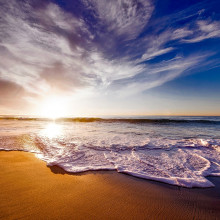
Skin in the Sun
Sarah Allinson, Lancaster University
The first thing that sunlight hits when it meets us is mainly our skin, and Adam Murphy’s been finding out about some of the positive and negative consequences when that happens from …
Adam - It is nice to get out in the sun, especially if you've been cooped up during lockdown or during winter. The light is nice, the warmth is great, and getting some sun on your skin has some real benefits.
Sarah - There's two effects that exposure to ultraviolet radiation from the sun can have on our skin. The first of these is that it can produce Vitamin D. Like other vertebrates we are able to synthesise Vitamin D; the ultraviolet radiation in the sun is responsible for that synthesis. So that's sort of the healthy bit of sun exposure, if you like. And it doesn't take very much sunlight to be able to do that. But here in the UK, that only really works for about six months of the year. So basically from October through to the end of March, there's not enough ultraviolet radiation hitting the UK for us to be able to produce that Vitamin D.
Adam - That is Sarah Allinson from Lancaster University about the importance of Vitamin D. If you don't get enough sunshine it can cause problems like rickets. But as she said, you don't need a lot of sunshine to feel the benefits, and you can definitely get too much - when the ultraviolet rays of light from the sun damage your skin and cause a nasty burn. Now usually the buddy is pretty good at repairing itself, but...
Sarah - ...but if that doesn't get repaired, or the skin cell doesn't die, then what can happen is you have mutations in genes that control the processes which determine whether a skin cell is able to grow or not. So in the body, the growth of cells is very, very tightly regulated. And cancer is what you get when that process of regulation of cell growth is disrupted. And so you go from the DNA damage, to mutations in the genes that control that process of cell division, and then that can lead to cancer. And that gap between the exposure to the ultraviolet radiation and the cancer can be quite significant. It can be decades in some cases.
Adam - Cancer is a myriad of different problems, though, and there's not even just one kind of skin cancer.
Sarah - There are two main types of skin cells that we need to think about when we're thinking about skin cancer. The majority of skin cancer cases arise in a type of cell called a keratinocyte, and that's what makes it most of your epidermis, the skin. And those skin cells have been continually renewed, have been continually sloughed off. When those become cancerous, they produce this non-melanoma skin cancer, the main types being basal cell carcinoma and squamous cell carcinoma. In general, those types of skin cancer are less fatal than the other type, but they do comprise the vast majority of skin cancer cases that are diagnosed every year - about 150,000 new cases of non-melanoma skin cancer diagnosed just in the UK every year. Those, as I say, tend to be less harmful, because they are less likely to spread around the body. The more harmful type of skin cancer is cutaneous malignant melanoma. And that's the type of cancer that arises in specialist cells that are found within our skin that are responsible for choosing pigments. So basically they're the cells that enable us to be able to tan when we're exposed to the sun. And those types of cells are often able to spread. And for that reason, they tend to produce cancer that can be more dangerous. And so although there are only 16,000 cases of malignant melanoma diagnosed in the UK every year, it's responsible for almost two and a half thousand deaths. So it is much more dangerous than the other type of skin cancer.
Adam - The easiest way to protect yourself is to avoid the sun and to wear sunscreen. The problem is that most people don't use nearly enough. You need a thick layer to get anywhere close to what's written on the bottle. And even then you need to keep reapplying because it can rub off, wash off, or even degrade under sunlight. But let's say you're doing your best - and you're still nervous. What should you look out for?
Sarah - The most important thing that people can do is to be aware of their own risks. So people who are more at risk of UV damage are people who have very pale skin, a tendency to freckle; if you tend to burn in the sun, then you're going to need more sun protection than somebody who has darker skin. So that's one thing to be aware of. The other thing is to be aware of your skin and to look out for any changes. One of the things that's come up during the pandemic is a lot fewer people have been going to their doctors with suspicious moles. And so the number of skin cancer cases that have been diagnosed in the past year has decreased. And I don't think that's because there's fewer cases; it's just they're not being picked up. And what we know about skin cancer, as with any cancer, is the sooner you are able to diagnose it the better. So if there's anything that you see that just appears a little bit unusual, then it's a good idea to make an appointment with a doctor and get them to check it out.
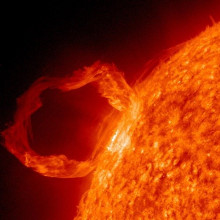
The dangers of solar storms
Stephanie Yardley, University College London
Sitting on Earth, going through the seasons every year, it can be easy to think the Sun is totally stable and unchanging; but it isn’t: periodically there are storms on the Sun, and if those storms fling material our way, it can cause us serious problems. Chris Smith spoke to Stephanie Yardley, from University College London, who studies these phenomena...
Stephanie - So basically they're huge bubbles of magnetic field and gas that the sun ejects, and they can travel at several million miles an hour through space, and sometimes they hit Earth. And when they reach Earth, in about one to three days on average, then they can interact with the Earth's magnetic field and also the atmosphere.
Chris - Isn't the sun slinging stuff at us all the time? That's called the solar wind, isn't it?
Stephanie - Yes. There's also the solar wind. There's also energetic particles as well. So we're constantly buffeted by the sun's wind.
Chris - But in terms of the intensity, you're saying one of these cosmic burps is far more powerful than just the normal wind that wafts our way off of the sun?
Stephanie - It depends on the conditions and that's why it makes it so difficult to predict, but generally the eruptions cause the spectacular displays of the Aurora. But that doesn't mean that we can't get effects from the solar wind as well or energetic particles.
Chris - Do we know why they happen and why the sun does this?
Stephanie - Yeah. So it's all to do with the magnetic field. So the sun has strong magnetic fields and if you imagine almost like an elastic band that twists and stretches, if you do that, then the elastic band will eventually break. And the same happens with the magnetic field. So it's essentially the sun storing energy in these magnetic fields and then it being released when they snap.
Chris - Do we therefore have a way of spotting when that elastic band is getting over tightened?
Stephanie - Yes. So we look at these regions on the sun of strong magnetic fields and essentially the way we predict what we call "space weather" - so just weather in space - is by looking at these regions and seeing when an eruption occurs. So we sit and stare at the sun and generally we look in wavelengths such as what we spoke about already, so ultraviolet radiation, and also visible light.
Chris - When this material arrives at Earth, what might it be able to do? We've talked about the health of our bodies being hit by sunlight and material from the sun such as UV radiation. But what about when these storms fling this debris our way, what impact does it have?
Stephanie - So as I've already mentioned, we have the spectacular displays of the Aurora, but you can also really affect our technology. Obviously we're very reliant on our technology nowadays and it can affect things like the power grids that we've already spoken about. So we can have power outages and the transformers can be severely damaged. They can affect things like the railway networks. Space flights - so astronauts on space walks, they can receive radiation, or even if you're on a passenger plane, if you're a passenger or crew on an airline aircraft, and also it can affect the actual electronics itself. So it can affect the aircraft itself or satellites and therefore affect communications and things like GPS.
Chris - How does it do that because this is just material coming from the sun, so how can it cause trains to go off kilter and electricity grids to melt down?
Stephanie - Well, it's all to do with the communication. So you can get things like signalling errors, for example, if the timings don't add up and that's all to do with communications going down. The power grids - you get currents induced in the ground from the changing of the magnetic field, of the Earth's magnetic field, so this can affect the power grids. And you can have power outages for hours but sometimes, if it's strong enough, then you can damage the transformers and they can take even several years to fix them.
Chris - So this has actually happened, it has a documented history of happening, and this is not just speculation - we've got this down, we know this happens?
Stephanie - Yeah. So one of the more recent events was in 1989, actually, where 6 million people went without power for nine hours in Quebec. And so this cost probably millions or billions of pounds. The biggest event we know of is called the Carrington event, quite a few people have heard of this, which was back in 1859. And we weren't so reliant on technology then so it only really affected the telegraphs and the telegraph operators were receiving shocks. But we had a near miss in 2012 - we call this the Near Miss Event, and it was during the Olympics. And so this eruption was actually not Earth directed, but if it was, maybe we might've lost the coverage of the Olympics. So who knows we're, you know, sitting and waiting for the next event to occur.
Chris - Perish the thought! So are we watching closely though? Do we have a way to do as good a forecasting for what the sun is doing as we can really forecast for weather on some parts of the surface now? Is there actually a physical program in place to do that?
Stephanie - Yeah. So we're sitting and staring at the sun and we're predicting all the time. Essentially what happens is an eruption will occur at the sun and we will then put this into models and model when it will arrive at Earth, but it's a bit harder than weather prediction so it's still quite difficult to do. And also, for example, the power grid or the national grid, they'll want five days of warning and we can't necessarily give them that lead time. So ideally scientists such as myself look at the regions that these eruptions come from to try and predict them before they happen, rather than once they've occurred. And even then things can go awry. And the eruption doesn't cause as much disruption as we thought, or it doesn't hit us head on, so obviously things evolve as they travel through space.
Chris - Is there anything we can do about this if you do detect an Earth bound storm coming our way?
Stephanie - So the main things, for example, for the power grids you can spread out the power, so you're less likely to get damaged. Or for example, if you're in an aircraft, you can fly at lower altitudes or I guess in a really extreme case you can ground the flights, but obviously doing stuff like this costs money. So we have to be sure that these events are going to happen and are going to affect us.
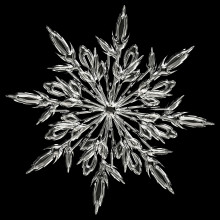
55:35 - QotW: Are all snowflakes unique?
QotW: Are all snowflakes unique?
This week, Charlotte Birkmanis has been looking into Alan’s cool question...
Charlotte - As snowflakes aren't something we see here all that often, I couldn't tell you if they're ever the same, but imagine if, in the entire history of the world there have never been two identical snowflakes – or ... maybe there have been and we’ve just never noticed. To explain if this is possible, we have Jason Benedict from the University of Buffalo … who had s'no problem answering this for us .
Jason - What a wonderful question! It is certainly true that no researcher has ever found two snowflakes that are ‘the same’. But this centers around what is meant by ‘the same’. Because of its importance to the world in which we live, water and its solid form ice have been studied very extensively. Through experiments in which the conditions were very carefully controlled, researchers have attempted to grow identical snowflakes, however, even under nearly perfectly controlled conditions the snowflakes were still different. Depending on the temperature, water molecules are actually moving around on the surface of ice! So one could even argue that a single snowflake is not even the same snowflake after you’ve looked at it! How cool is that!
Charlotte - I have to admit, that IS very cool!
Jason - So could there ever be two identical snowflakes? Possibly. If the crystals were super small (nanosized with a very small number of water molecules) and super cold (stop water on the surface from moving), it seems possible that one could create two identical ice crystals. How’s that for a challenge to the ice scientists of the world!
Charlotte - AlanCalverd points out on the forum “Even if you found two structures with the same underlying fractal symmetry, they would almost certainly not have the same number of molecules”. Thanks to Alan for his frosty question, and for Jason’s n-ice answer. Join us next week when we might be out of our depth, as we consider Richard's question/
Richard - Will a can of soda dropped in the ocean sink until it implodes, or will it float once the density reaches equilibrium?
Related Content
- Previous Troubled Minds
- Next Is every snowflake unique?










Comments
Add a comment